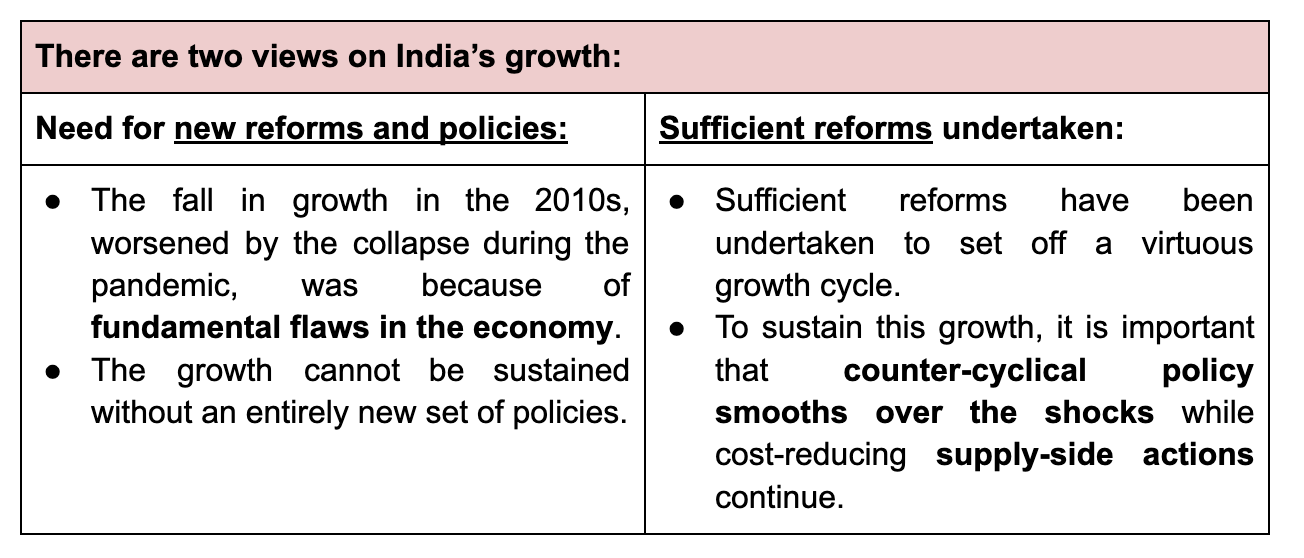News Excerpt:
Growth for the fourth year after COVID-19, contained inflation and poverty reduction suggests that sufficient reforms have been undertaken and the Indian economy is on an upward trajectory.

Impact of Inflation on GDP Growth:
- It is argued that a lower inflation measure overestimates growth.
- If the low Wholesale Price Index (WPI) overestimates growth, then high WPI inflation should underestimate growth.
- WPI inflation was in double digits for two years between April 2021 and March 2023.
- According to this logic, the average post-pandemic GDP growth over 2021-24, measured at 8.1 percent, should be even higher.
- A lower inflation does not necessarily mean that the growth has been underestimated.
|
Wholesale Price Index (WPI):
|
Absence of double deflation:
- India, along with other major countries, does not yet have a services price index.
- The use of double deflation can either under- or over-estimate GDP.
- Double deflation is the technique used to estimate the real value added by an industry.
- In the double deflation method, real value added is measured as the difference between real gross output and real intermediate inputs.
Data accuracy:
- Data in India is often subject to “smell tests”, highlighting any evidence that can be found to question the veracity of growth measurement.
- So much high-frequency data, not subject to problems in the measurement of aggregates, is available now.
- All of the available indicators show strong economic activity in the country.
Did India do better than expected because global growth was higher?
- India did not do well in 2019 despite good global growth.
- Appropriate domestic policy is essential for the growth of the economy and global growth will not always boost the Indian economy.
Fall in household financial savings:
- Households include informal enterprises and they are borrowing to invest.
- Liabilities are rising to finance investment more than consumption.
- This is healthier and more sustainable, unlike the borrowing-financed consumption binge of the 2010s.
- Moreover, the current account deficit has fallen below 1% of GDP, partly because financial savings are better intermediated and available for domestic investment.
Conclusion:
- There is healthy investment and credit-led growth supported by a strong financial sector that will raise savings as incomes rise.
- India’s private credit ratios are much below its peers.
- The view that private investment is not rising is because of an expectation of a 2008-type infrastructure boom that turned out to be unsustainable.
- This will not happen under better bank independence, regulation and risk-based pricing today.
- Gross capital formation was 32.2% of GDP in 2022-23.
- This is not low and is mostly contributed by private capex (capital expenditure), which is rising sustainably in a virtuous cycle that will become clearer after the elections. Policy continuity is important for private capex.
- Centre for Monitoring Indian Economy (CMIE) data shows new private sector projects in Q4 2023-24 were at Rs 9.8 trillion — the second-highest level ever.


